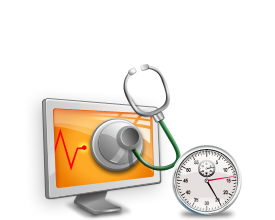Products

Who We Serve
August 6, 2014
In previous optimization posts, we’ve made the case that IT must better serve health care business, optimize ROI, and stay ahead of regulatory requirements in order to be viable. Nowhere is this more obvious than in the area of clinical systems, where many hospitals are now struggling with the results of their clinical system implementations.
As a result of the Meaningful Use / MIPS incentives, most hospitals have made significant investments of time and money to install electronic medical records systems (EMRs). Because of the relative level of inexperience with EMRs in the hospital setting four years ago, many proceeded with key guidance provided by their software vendors who, while familiar with their own product, lacked real experience installing the systems, let alone experience tuning systems and processes in an effective manner. At the time, there were very few true experts in the field, and that general lack of experience has resulted in clinical systems that do not live up to their potential.
The promise, so the industry was told, is that EMRs will improve the quality of care, decrease the cost of care, and quite simply transform the practice of healthcare. Reality, unfortunately does not bear that out. There are some recent case studies showing tightly focused benefits, but evidence for overall benefits is lacking. In too many cases, far more attention was paid to rushing to meet the deadlines and standards of Meaningful Use / MIPS than to the ways to use the systems to impact the cost and quality of care. The overall effect is undermining the hospitals efforts to benefit from their investments in this costly technology.
The result of these rushed installs is as expected — serious dissatisfaction with the systems.
One-fifth of physicians have indicated a desire to go back to paper and a significant number believe that their hospital should have a different EMR.
According to a 2013 survey from the American College of Physicians, one-third of physician EMR users were “very dissatisfied” with the ability of their EMR to decrease their workload. This is a primary method physicians use to measure the value derived from the investment. Aside from the time required for data entry, a study by the RAND corporation also points to EHR usability, interference with face-to-face patient care, and a degradation of clinical documentation as potential contributors to dissatisfaction. Interestingly enough, the more functionality an EMR possesses, the more likely the physician is to find it unsatisfactory.
For most hospitals, the answer is no. There are three key reasons why replacing the current EHR is generally not the highest value approach:
 What Can You Do?
What Can You Do?We recommend performing a clinical system optimization. Doing this will make the strongest impact on the organization, and produce the best return on investment. By going through the optimization process, the organization can benefit from the existing investment in the current clinical systems and improve their function. Doing this will improve the quality of care, the cost of care, and improve relationships with the clinical staff.
A clinical system optimization begins with a broad look at the entire clinical system environment – not just the core EHR. It also includes an examination of the workflow and process environment surrounding those systems. Despite this broad-based start, a well-structured optimization quickly becomes a highly focused project. As soon as the overall picture is understood, the project shifts to a focus on:
The clinical optimization team needs to be driven by a leader with experience in implementing and optimizing your clinical systems environment. In many cases, this person is best found outside the organization, either as a consultant or as a new hire. An outsider doesn’t have the baggage of having been involved in the sub-optimal install that is currently being optimized.
Senior leadership must be actively involved in supporting the project and making clear to all parties that the success of the project is directly connected to the success of the organization and quality patient care, and that no obstacles will be permitted to compromise the effort.
A broad range of active physician, nursing, and other operational partners must be involved in the project team. In many cases, the lack of involvement in the original installation was at least part of the problem, but at this point, the major dissatisfactions with the system are probably clinical, and only with active participation of clinical staff can this be addressed.
In future posts we will discuss key points about electronic medical records that everyone must realize before initiating an optimization project, repairing clinical relationships, and the specific steps to take when doing an optimization to ensure success.
If you think your organization can benefit from a clinical optimization and want to talk with an expert, let us know!